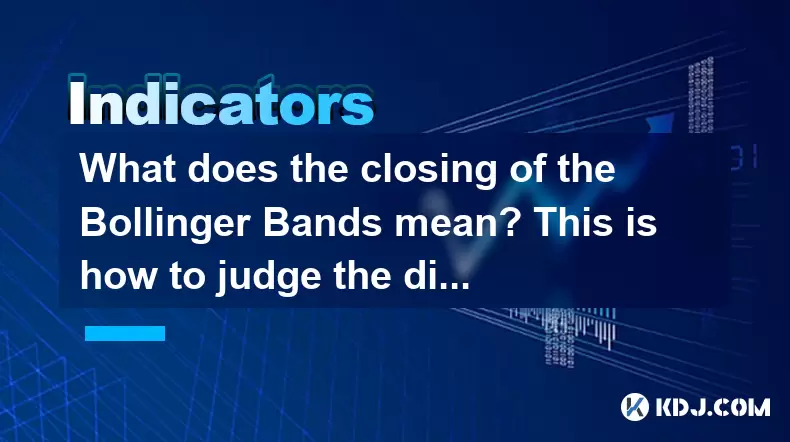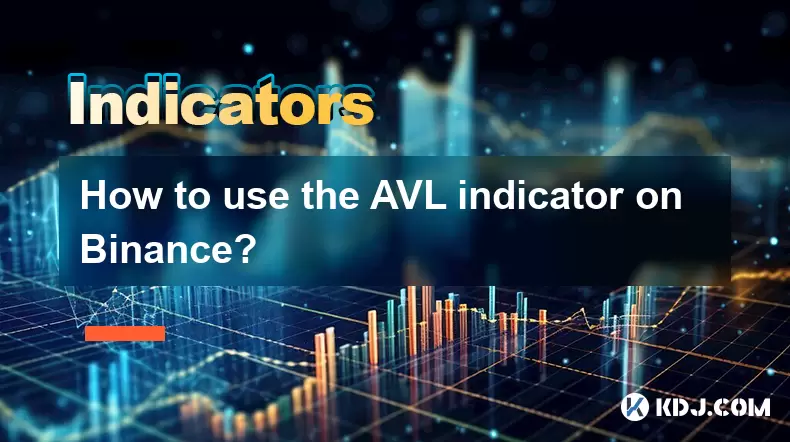-
 Bitcoin
Bitcoin $117700
-0.03% -
 Ethereum
Ethereum $3805
0.49% -
 XRP
XRP $3.098
-1.00% -
 Tether USDt
Tether USDt $1.000
0.03% -
 BNB
BNB $792.8
-1.72% -
 Solana
Solana $177.9
-1.95% -
 USDC
USDC $1.000
0.02% -
 Dogecoin
Dogecoin $0.2202
-1.55% -
 TRON
TRON $0.3278
-2.92% -
 Cardano
Cardano $0.7641
-2.43% -
 Hyperliquid
Hyperliquid $42.21
-2.68% -
 Sui
Sui $3.758
-1.58% -
 Stellar
Stellar $0.4080
-3.21% -
 Chainlink
Chainlink $17.75
-0.33% -
 Bitcoin Cash
Bitcoin Cash $591.8
4.96% -
 Hedera
Hedera $0.2561
-3.09% -
 Avalanche
Avalanche $23.34
-4.24% -
 Litecoin
Litecoin $110.7
1.96% -
 UNUS SED LEO
UNUS SED LEO $8.956
-0.01% -
 Toncoin
Toncoin $3.410
0.79% -
 Ethena USDe
Ethena USDe $1.001
0.03% -
 Shiba Inu
Shiba Inu $0.00001288
-1.82% -
 Uniswap
Uniswap $10.07
-2.06% -
 Polkadot
Polkadot $3.807
-2.27% -
 Monero
Monero $308.2
-2.15% -
 Dai
Dai $1.000
0.03% -
 Bitget Token
Bitget Token $4.521
-0.30% -
 Pepe
Pepe $0.00001134
-1.52% -
 Cronos
Cronos $0.1457
0.65% -
 Aave
Aave $274.9
-2.47%
What does the closing of the Bollinger Bands mean? This is how to judge the direction of the next wave of market conditions!
When Bollinger Bands narrow, it signals low volatility and potential for a strong price move, but traders should confirm with volume or candlestick patterns before acting.
Jun 20, 2025 at 04:15 pm

Understanding the Bollinger Bands Mechanism
Bollinger Bands are a widely used technical analysis tool in cryptocurrency trading, designed to help traders identify potential price volatility and trend reversals. The indicator consists of three lines: a simple moving average (SMA) in the center, usually calculated over 20 periods, and two outer bands that represent standard deviations above and below the SMA. These bands dynamically expand and contract based on market volatility.
When the Bollinger Bands narrow, it indicates that the price is experiencing a period of low volatility. This phenomenon is commonly referred to as a "squeeze." A squeeze often precedes a significant price movement, though it does not inherently indicate direction—whether up or down. Traders should pay close attention during these moments because once the bands start to widen again, it can signal the beginning of a new trend or continuation of an existing one.
What Does It Mean When Bollinger Bands Close?
The phrase "closing of the Bollinger Bands" typically refers to a situation where the upper and lower bands move closer together, reducing the distance between them. This narrowing occurs when the standard deviation of the price decreases, which implies less fluctuation in asset prices. In the context of cryptocurrency markets, this condition often appears before major price breakouts.
It's important to distinguish between a simple contraction and a full-fledged squeeze. A true squeeze happens when the bands compress to such an extent that they almost hug the middle SMA line. This phase suggests that the market is consolidating, and traders should prepare for a potential explosive move once the consolidation ends.
How to Interpret a Closing Band Scenario
Interpreting a closing band scenario involves more than just observing the visual narrowing of the bands. Traders need to combine Bollinger Bands with other tools to confirm possible breakout directions. One effective method is using volume indicators like On-Balance Volume (OBV) or Volume Weighted Average Price (VWAP) to detect early signs of buying or selling pressure.
Another useful approach is to monitor candlestick patterns forming during the compression phase. For instance, if a bullish engulfing pattern forms near the lower band while the bands are tight, it could hint at an upcoming upward breakout. Conversely, a bearish engulfing candle near the upper band might suggest a downward move.
Traders should also consider support and resistance levels during this phase. If the price is approaching a key resistance level while the bands are closing, there’s a higher probability of a breakout to the upside. Similarly, proximity to a strong support zone during a band closure may lead to a downward breakdown.
Practical Steps to Trade Based on Bollinger Band Closure
- Identify the narrowing of the bands visually on your chart.
- Confirm the presence of a true squeeze by checking if the bands are hugging the middle SMA tightly.
- Use additional indicators like RSI or MACD to assess momentum.
- Watch for candlestick patterns emerging within the consolidation area.
- Set up entry orders slightly beyond recent swing highs or lows to catch the breakout.
- Place stop-loss orders outside the opposite side of the consolidation range.
- Monitor volume surges as confirmation of a valid breakout.
Timing entries correctly is crucial when dealing with closing Bollinger Bands. Entering too early may result in false signals, while entering too late might cause missing out on most of the move. Therefore, patience and precision are essential traits for traders attempting to capitalize on this pattern.
Common Pitfalls and How to Avoid Them
One common mistake among novice traders is assuming that a narrowing of the Bollinger Bands automatically signals an imminent breakout. However, sometimes the market may remain compressed for extended periods without any meaningful movement. To avoid falling into this trap, always use complementary tools to validate signals.
Another pitfall is misjudging the direction of the breakout. Without proper confirmation from volume or candlestick behavior, traders might enter trades in the wrong direction. Always wait for a clear breach of key levels before making decisions.
Lastly, emotional trading can be detrimental. Fear of missing out (FOMO) might push traders to jump into positions prematurely, leading to losses. Discipline and adherence to pre-defined strategies can help mitigate this risk.
Key Takeaways and Observations
The closing of Bollinger Bands serves as a powerful alert mechanism for traders anticipating high-volatility events. While the tool itself doesn't predict direction, it provides valuable insights into potential trend changes. Understanding how to interpret these signals within the broader market context can significantly enhance decision-making accuracy.
Moreover, successful application of this concept requires practice and backtesting across different crypto assets. Each digital currency exhibits unique volatility characteristics, so adjustments may be necessary depending on the specific market being analyzed.
Frequently Asked Questions
Q: Can Bollinger Bands alone determine market trends?
A: No, Bollinger Bands should not be used in isolation. They work best when combined with other indicators such as volume, RSI, or MACD to provide a more comprehensive view of market conditions.
Q: Is a narrow Bollinger Band always followed by a breakout?
A: Not necessarily. Sometimes the market remains in a tight range for extended periods without breaking out. Confirmation from other technical tools is required to filter out false signals.
Q: What timeframes are best suited for analyzing Bollinger Band closures?
A: Shorter timeframes like 15-minute or 1-hour charts tend to show more frequent band closures, but they can also generate more noise. Longer timeframes like 4-hour or daily charts offer clearer and more reliable signals.
Q: How do I differentiate between a normal band contraction and a true squeeze?
A: A true squeeze occurs when the bands come extremely close to the middle SMA line, almost touching it. Normal contractions are milder and don’t exhibit such extreme compression.
Disclaimer:info@kdj.com
The information provided is not trading advice. kdj.com does not assume any responsibility for any investments made based on the information provided in this article. Cryptocurrencies are highly volatile and it is highly recommended that you invest with caution after thorough research!
If you believe that the content used on this website infringes your copyright, please contact us immediately (info@kdj.com) and we will delete it promptly.
- Cold Wallet vs. MetaMask: A Crypto Wallet Revolution?
- 2025-07-31 10:30:57
- Bitcoin Casinos in 2025: Instant Payouts and Welcome Bonuses
- 2025-07-31 10:50:33
- Meme Coins in 2025: Token Burns and the Quest for Moonshots
- 2025-07-31 10:50:33
- Unlocking Value: A Deep Dive into Random Year 1 oz Krugerrand Gold Coins
- 2025-07-31 10:57:21
- LYNO Token Presale: AI Arbitrage Revolution in DeFi
- 2025-07-31 05:11:11
- Pepecoin Successors: Can These Cryptocurrencies Make You a Millionaire?
- 2025-07-31 05:50:12
Related knowledge

How to use the AVL indicator to confirm a trend?
Jul 31,2025 at 10:25am
Understanding the AVL Indicator and Its ComponentsThe AVL indicator, also known as the Accumulation Volume Line, is a technical analysis tool that com...

How does volume affect the AVL indicator?
Jul 31,2025 at 11:23am
Understanding the AVL Indicator and Its Core ComponentsThe AVL indicator, short for Accumulation Volume Line, is a technical analysis tool used primar...

How to use the AVL indicator with MACD for better signals?
Jul 31,2025 at 09:22am
Understanding the AVL Indicator and Its Role in Cryptocurrency TradingThe AVL indicator, also known as the Accumulation Volume Line, is a volume-based...

How to identify sell signals with the AVL indicator?
Jul 31,2025 at 07:09am
Understanding the AVL Indicator and Its Core ComponentsThe AVL indicator, also known as the Accumulation Volume Line, is a volume-based technical anal...

How to use the AVL indicator on Binance?
Jul 31,2025 at 12:22pm
Understanding the AVL Indicator and Its Relevance on BinanceThe AVL indicator, also known as the Accumulation Volume Line, is a technical analysis too...

What are the best settings for the AVL indicator?
Jul 31,2025 at 10:04am
Understanding the AVL Indicator and Its PurposeThe AVL indicator, also known as the Accumulation Volume Line, is a technical analysis tool used in the...

How to use the AVL indicator to confirm a trend?
Jul 31,2025 at 10:25am
Understanding the AVL Indicator and Its ComponentsThe AVL indicator, also known as the Accumulation Volume Line, is a technical analysis tool that com...

How does volume affect the AVL indicator?
Jul 31,2025 at 11:23am
Understanding the AVL Indicator and Its Core ComponentsThe AVL indicator, short for Accumulation Volume Line, is a technical analysis tool used primar...

How to use the AVL indicator with MACD for better signals?
Jul 31,2025 at 09:22am
Understanding the AVL Indicator and Its Role in Cryptocurrency TradingThe AVL indicator, also known as the Accumulation Volume Line, is a volume-based...

How to identify sell signals with the AVL indicator?
Jul 31,2025 at 07:09am
Understanding the AVL Indicator and Its Core ComponentsThe AVL indicator, also known as the Accumulation Volume Line, is a volume-based technical anal...

How to use the AVL indicator on Binance?
Jul 31,2025 at 12:22pm
Understanding the AVL Indicator and Its Relevance on BinanceThe AVL indicator, also known as the Accumulation Volume Line, is a technical analysis too...

What are the best settings for the AVL indicator?
Jul 31,2025 at 10:04am
Understanding the AVL Indicator and Its PurposeThe AVL indicator, also known as the Accumulation Volume Line, is a technical analysis tool used in the...
See all articles

























































































